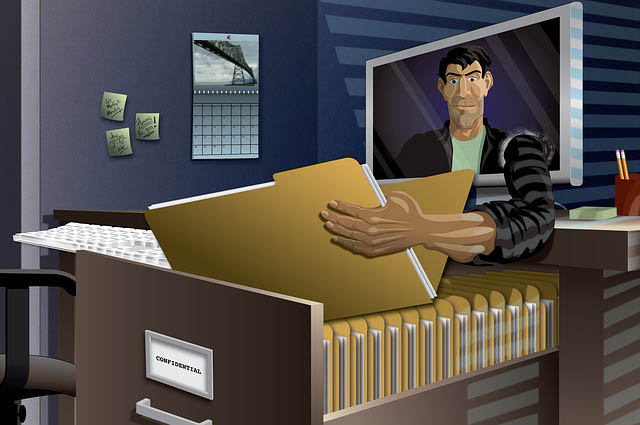Identity theft – the idea instantly sparks anxiety. How much money will they get? How long will it take me to discover something is wrong? Will I be able to pay my bills? How long until I get my money back? While there’s never a guarantee, there are several steps you can take to prevent a bad actor from gaining access to your money.
Types of Identity Theft:
The first step in better protecting yourself is knowing the type of identity theft you are trying to prevent. Some fraudsters gain access to existing accounts to steal the money or credit you already have. This type of fraud is easier to notice, but causes more upheaval in your life. Others simply mine enough identifying information about you to open up accounts in your name and without your knowledge. The good news here is you aren’t likely to have your daily finances affected, but the fraud can go undetected for much longer. Often, this type of activity is not discovered until you are applying for a loan or mortgage.
Safeguarding Your Existing Information:
This is the most common way people see their finances compromised. There many steps you can take, but the important thing is to limit the number of ways your information is not within your control.
- Shred documents with personal information before discarding. Better yet, sign up for paperless billing.
- Don’t give out personal information or account numbers unless you know who you’re dealing with.
- This is especially true online. Make sure you trust the site before you enter your information. We recently posted a blog about holiday shopping that discussed more ways to stay safe online.
- Speaking of being online, make sure your passwords are secure. Here’s a guide on how to create a secure password.
- If you use browser extensions, follow Mozilla’s tips to analyze trustworthiness.
- Be mindful when using your cards that nobody is looking over your shoulder, and be on the lookout for skimmers. Read our post on how to recognize skimmers.
Safeguarding Your Identity
As they say, an ounce of prevention is worth a pound of cure. It can seem overwhelming. Stealing information is a fraudster’s full-time job, but as the joke about outrunning a bear goes, the trick is to be more secure than others, so you’re not the easiest target.
- Pay attention to when and where you give out personal information. Getting enough information to steal an identity is like putting together a puzzle – information is gathered piece-by-piece.
- Create a fraud alert with the credit bureaus. This doesn’t keep new accounts from being opened. It requires lenders to verify your information before issuing new credit. The FTC has a good primer on how to set up a fraud alert here.
- Consider signing up for a credit and information monitoring service. This isn’t a fail-safe, but if you want to be sure, it’s a good step.
Monitor:
- Go to annualcreditreport.com every year to make sure you know every line of credit that is tied to you.
- If you have children, check their information as well. Every year thousands of kids have their identity stolen, and it can be years before anybody realizes it has happened.
- Monitor your financial account statements and order history from online retailers. If you see something you don’t recognize, immediately look into it.
- Pay attention to the news. If you hear about a breach make sure it’s not a place that might have your information.
Choose Your Partners Wisely:
This is something that often goes overlooked, but can be one of the most important ways to keep your identity safe. You should only trust your data with companies that value your information as much as you do. At WCU, for example, guarding your personal information is crucial to us. By using advanced fraud-monitoring technology, our committed staff closely monitors your accounts for suspicious or irregular activity.
If you regularly go into a branch, contact our Virtual Center, or even use our new Virtual Teller Units, we pay attention to who you are. So, it’s easier for us to notice when something seems off, or when we see activity on your accounts that is different from your normal spending behavior.
Stay Calm
This isn’t necessarily what you want to hear, but even if you do everything right, your information might still be compromised. If that happens though, rest assured there are protections in place to ensure you aren’t left holding the bag. This infographic outlines your liability.
The thing to remember is that the faster you act, the less severe the impact is going to be.
- File an identity theft report with the Federal Trade Commission (FTC) at identitytheft.gov (currently unavailable due to the government shutdown) or by phone at 1-877-438-4338.
- File a police report. Most people think it won’t make a difference, but this is an essential step.
- Contact your financial institutions and let them know what happened.
- Criminals often change your address with the post office so they can get your new cards automatically sent to them. Keep your eyes out for a change of address card from the USPS, or call 1-800-ASK-USPS.
- If you didn’t do it before, place that fraud alert.
- Consider a credit freeze. This is a drastic step, as it prevents you from getting credit as well, but can stop the issue from snowballing.
This is a lot to take in, and it’s something we all wish we didn’t have to worry about. The more care taken in preventing identity theft, the less likely it is to happen. Remember, there are a number of fraud-preventative services WCU offers, and our committed staff is here for you should you have questions, need advice, or simply want to check in on your accounts.